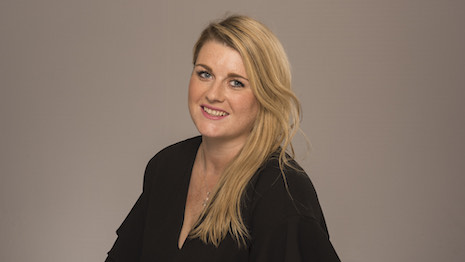- About
- Subscribe Now
- New York,
December 5, 2019

 Katharine Biggs is marketing manager at parcelLab
Katharine Biggs is marketing manager at parcelLab
High-end ecommerce is a significant growth engine for both traditional and digital native luxury brands.
In general terms, luxury brands have viewed digital channels simply as a source of brand inspiration, but now it is time to evolve into a much more immersive, personal, multichannel experience to drive sales and long-term brand loyalty.
Digital savvy
Consumer expectations towards retail experiences are changing and while shoppers have been slower to embrace buying luxury lifestyle brands online versus other retail categories, the new breed of millennial and Gen Z consumers are increasingly looking to make luxury purchases in their native digital space. So the shopping experience needs to appeal to them.
By 2025, Bain & Co. predicts that these younger demographics will account for 45 percent of the global personal luxury goods sector, meaning that luxury brands cannot hold back any longer and need to make the necessary steps now in their online stores and digital presence as a whole to ensure that they capture a slice of the pie before the competition gets there first.
It is no secret that traditional luxury brands have long shied away from ecommerce and it is true that 40 percent of luxury shoppers still start their shopper journey in-store, according to research from Attraqt.
But equally as important is the fact that 39 percent of luxury shoppers are now using mobiles and 29 percent using the retailer or brand’s own app. But the experience cannot stop after the purchase – it requires long-term actions to build customer loyalty and encourage customers to keep repurchasing.
ParcelLab’s new “UK Ecommerce Shipping Study 2020: Fashion Edition” analysed the checkout, shipping and returns of the top 100 fashion retailers in the United Kingdom.
Within this top 100, 10 percent were luxury brands – including Farfetch, Flannels, Gucci, Hugo Boss, Marc O’Polo, MatchesFashion, Net-A-Porter, Paul Smith, Saint Laurent and Zalando – with a further 10 percent falling into the premium category.
On the whole, a huge 99 percent of the top 100 retailers failed to provide customers with a personalized post-checkout experience by neglecting to send tailored shipping communications to their customer.
Whilst heavy investments have been made in the customer journey prior to checkout, this vital marketing channel not only marks a prime stage in the customer journey, but a lack of personalization and follow-up communications suggest that retailers are losing out on long-term brand loyalty by not continuing this dialogue with their valued customers.
Hugo Boss, on the other hand, was highlighted as a standout luxury brand for best personalization during the online checkout, shipping and returns process. So, what can other luxury brands learn from this?
From the moment a potential or existing consumer enters a luxury brand’s site to the end of the returns journey, the experience should be completely personalized to the customer.
What sets luxury brands in the physical space apart is the unique and personal connection they create with consumers. This same model should be replicated online and generic messages should be avoided at all stages throughout the entire customer journey.
Instead, ensure that all delivery communications are branded and personal, as well as creating a tracking page and product recommendations.
The biggest opportunity here for luxury brands is multichannel personalization. With the Hugo Boss experience, customers are able to track both their online and offline purchases in one place, as well as receiving personalized offers and alternation services. This level of service is above average and sets the brand apart from the rest and can be replicated by other luxury brands wanting to step up their game.
THE LUXURY BUSINESS is experiencing a significant attitude shift that cannot be ignored and it has never been more important to create a luxury shopping journey fit for the digital era – one that focuses on end-to-end personalization throughout the complete customer journey.
Making a few simple, but necessary changes now to your online retail presence will go a long way in creating loyal customers.
Katharine Biggs is marketing manager at post-purchase specialist parcelLab, London. Reach her at katharine@parcellab.com.
Share your thoughts. Click here